Ancient Rome makes us look to the future
Hymen, Oh Hyménée!, the “long lost” painting that was finally unveiled at Splendor: Juan Luna, Painter as Hero, an ongoing exhibition at the Ayala Museum, has been attracting a crowd that revels in the fact that this work, brought home from Spain by Leon Gallery founder Jaime Ponce De Leon, can finally be appreciated in all its glory.
Painted somewhere between 1886 and 1887, at the start of the Philippine master’s honeymoon in Italy with his wife, Paz Pardo de Tavera, it features a joyous Boda Romana (Roman Wedding or Vow), the other title it is known by.

With flowers strewn on the floor of a lavishly decorated domus with Pompeiian wall murals and fluted pillars, a procession to the groom’s chamber ensues, led by three boys in emerald tunics protecting the bride from malevolent spirits, followed by bridesmaids wearing palla cloaks over their stolla dresses and servants in togas bearing gifts and offerings.

Luna’s work embodies a spirit of optimism for the future that he was about to embark on with his wife by conjuring a ceremonial celebration in the ancient Roman world where everything was perfect and in harmony, evoking a certain timelessness in the architecture, the interior decoration, and the garments. It’s no surprise that after the pandemic, this harping-on enduring classicism permeates the world of design, fashion included.

At about the time of the opening of the exhibit, Maria Grazia Chiuri of Dior was in fact presenting the house’s couture collection inspired by Ancient Rome. Growing up in that storied city, she was surrounded by Roman and Greek statuary and art from that era, which she references for their powerful simplicity to create sculpted capes, vertically pleated dresses like Doric columns, vestal virgin shifts, and architectural tunics.
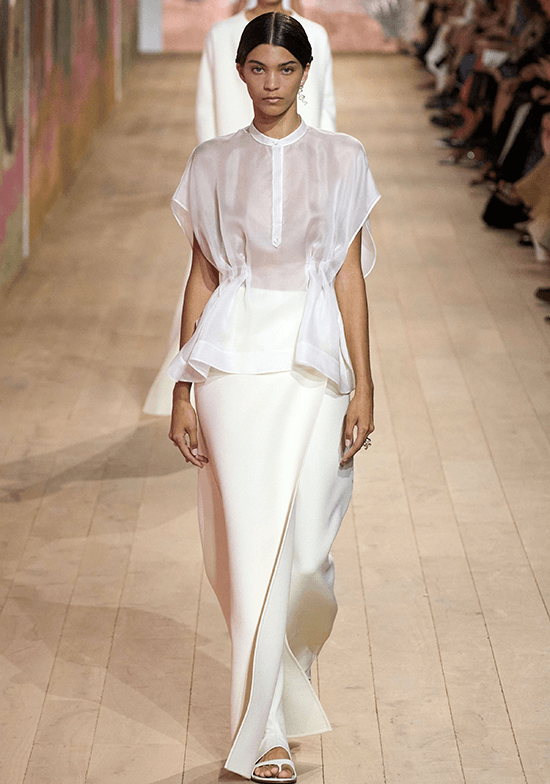
Roman tunics and togas were actually derived from Greece, where the dress had a dramatic transformation from the Bronze Age to the Archaic Period (8th century to 480 BCE) with the fitted, low-cut jacket that exposed the breasts atop an ankle-length skirt giving way to a simple sheath made of rectangular pieces of cloth draped to the body and held in place by pins and brooches. This was the basis for the peplos, the earliest known item of Archaic Greek women’s clothing.
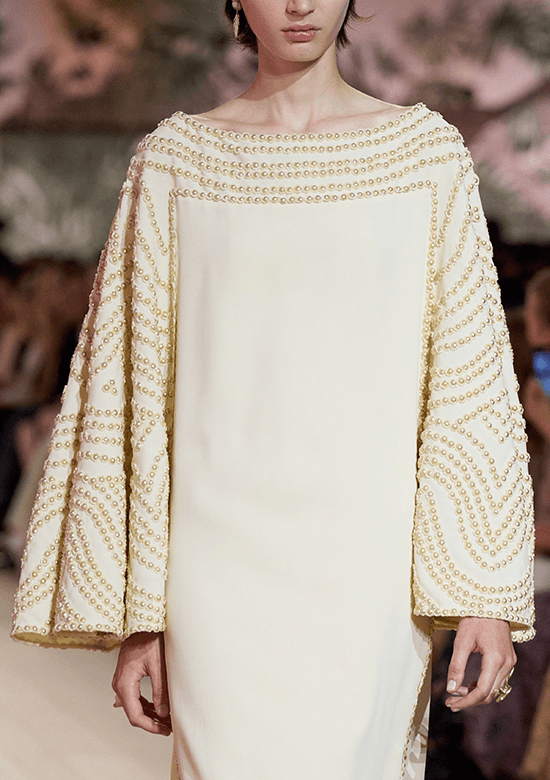
The sleeveless peplos, made from a rectangular piece of cloth, was folded first in half around the torso and beneath the arms, with the top folded down to form an over-fall or apotygma and pinned over both shoulders with fibulae clasped brooches. A variation of the peplos called the chiton came without the over-fall. The himation arrived later as a cloak or mantle to wear on top of the peplos or chiton, becoming voluminous in Rome when it became the toga.
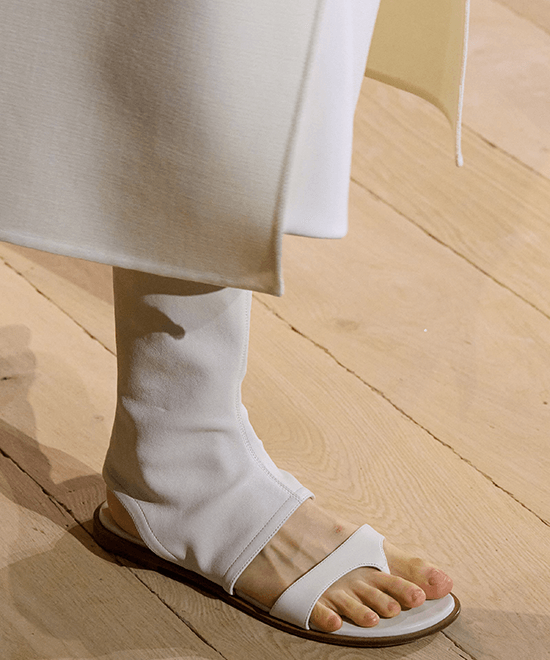
While this form of dress was more modest in covering the body, it was also more practical and suited the Mediterranean climate.
A parallel can be seen in fashion today, when comfort is paramount and with the effects of global warming, clothes are becoming more relaxed, if not oversized. This doesn’t necessarily mean they’re less sexy, just as the himation then with its range of draping and wrapping possibilities had a variety of cultural meanings depending on the proportion and how it was worn. Although it was a garment of decorous modesty when worn by women, “it has been shown on hetaerae as a device for provocation,” according to fashion scholar Harold Koda.

Classical dress would be a source of inspiration for designers through the years. During the first decade of the 20th century, when Paul Poiret declared the wasp-waisted silhouette démodé and the columnar, high-waisted Directoire-Revival gowns in vogue, the peplos was certainly emulated for its liberating style, as seen in a 1922-23 evening dress that is not constructed like ancient precedents but also uses orthogonal cloth and suggests an affinity to the simply configured garments of the ancient world.

This interest in the non-tailored traditions of much regional dress and the conflation of classical styles with ethnographic forms was also exemplified by Madame Grès, who was revered for her painstakingly pleated silk jersey pieces like a 1965 evening dress with a himation-like draped swag made of continuous and unbroken panels of fabric.
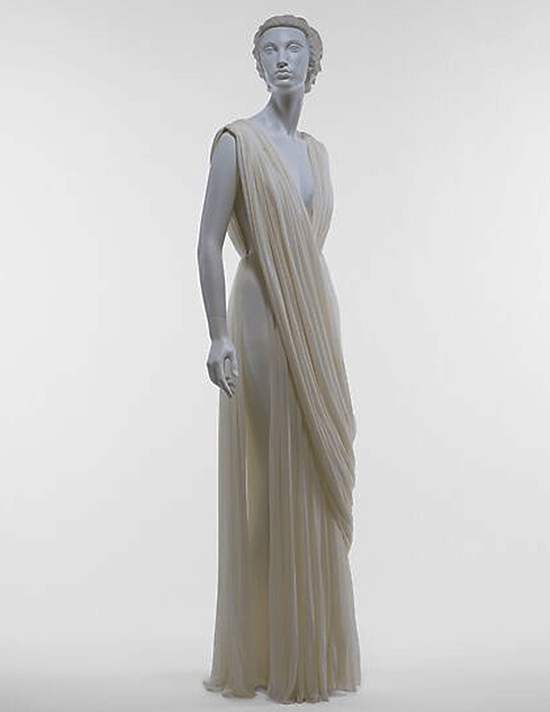
Mariano Fortuny, known for his finely pleated dresses, created the Delphos gown in 1907, based on the chiton and named after the classical Greek statue, The Charioteer of Delphi.
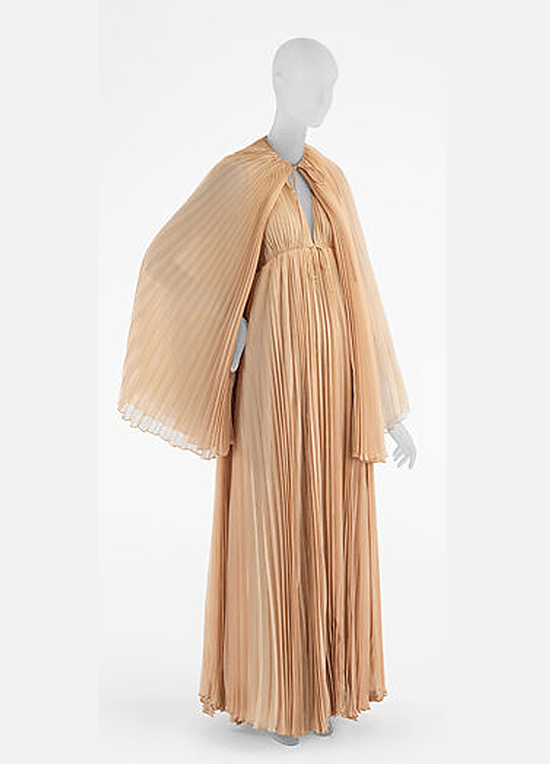
In 1974, the himation was transformed by Halston into a double-tiered cape of multiple layers of silk chiffon, pleated to allude to antique dress just like the haltered gown beneath which is essentially a fluted Greek column.
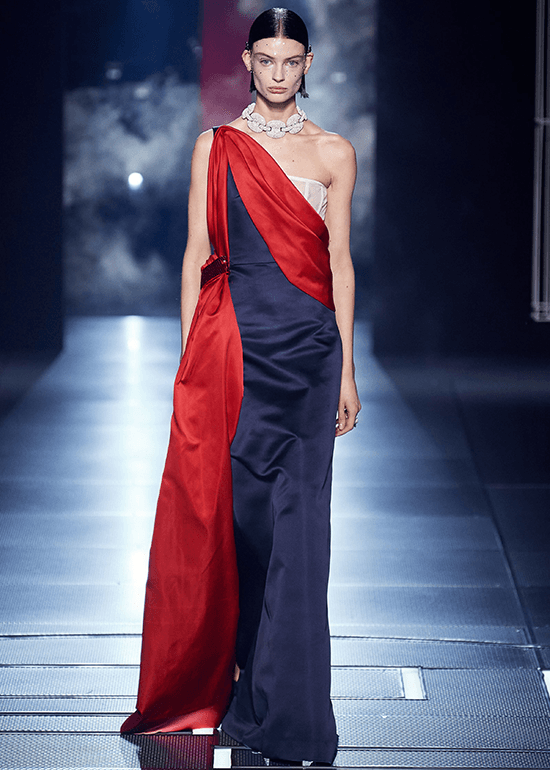
Architecture and architectural elements have always been a reference for fashion designers who practice a form of construction in couture, which, after all, is all about the architecture of clothes.
Kim Jones, the creative director of Fendi, wanted to show this by exposing underpinnings in his line as a reminder of the artisans’ hands that made them. Rome, which has some of the most monumental architecture, is a constant muse for his couture collection for the house: “It has so many layers to it, it’s such an ancient city. We’re always thinking of the past, present, and future of it—the idea of different times and that very spiritual side of Rome, which becomes almost celestial; almost spacey.”
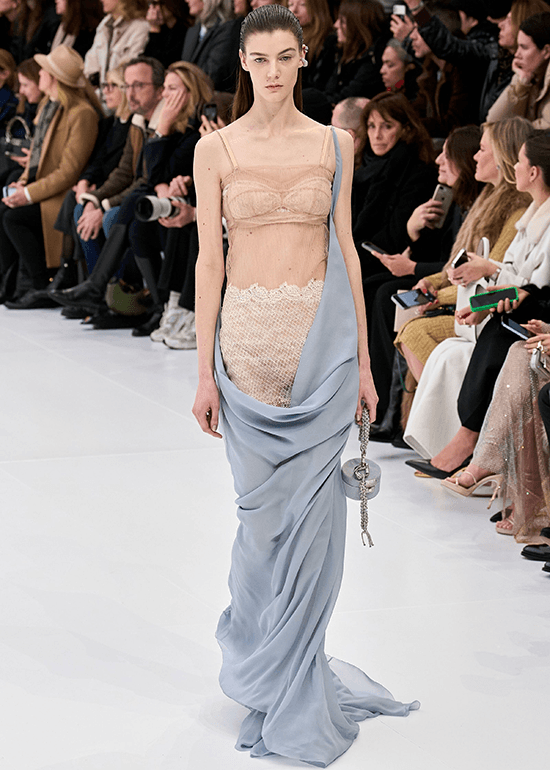
Rereading Dune and a book on Star Wars by George Lucas, his take on Rome has a Hollywood frisson, recalling sci-fi films that are centered around the conversation between the ancient and futuristic, mirrored in gowns that meld the city’s edifices with futuristic imagery. This constant moving back and forth in time that Jones experiences every time he walks from the Fendi headquarters, which is very modern, to other parts of the metropolis with its antiquities, is a feeling that he tries to achieve in his couture: “There’s a total timelessness to the city, a historic vein which runs through it but also a movement that is projecting forwards.”


